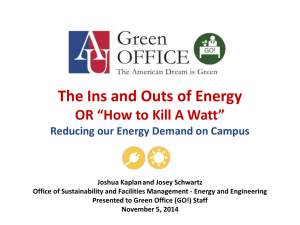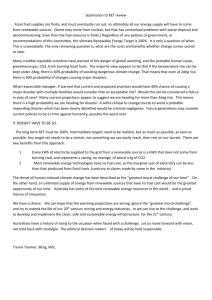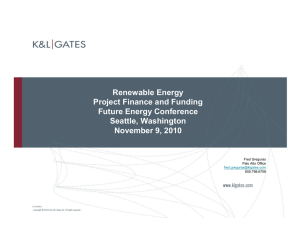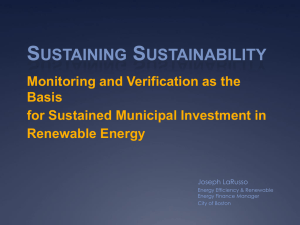INDIA, wind 20 000 MW potential
advertisement
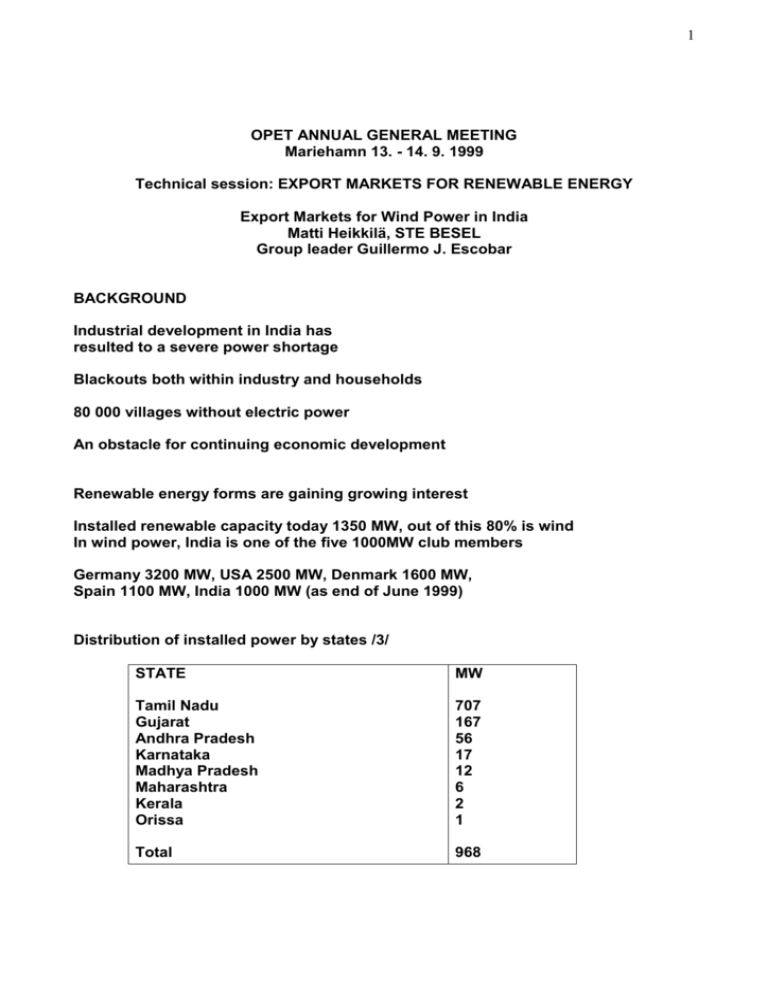
1 OPET ANNUAL GENERAL MEETING Mariehamn 13. - 14. 9. 1999 Technical session: EXPORT MARKETS FOR RENEWABLE ENERGY Export Markets for Wind Power in India Matti Heikkilä, STE BESEL Group leader Guillermo J. Escobar BACKGROUND Industrial development in India has resulted to a severe power shortage Blackouts both within industry and households 80 000 villages without electric power An obstacle for continuing economic development Renewable energy forms are gaining growing interest Installed renewable capacity today 1350 MW, out of this 80% is wind In wind power, India is one of the five 1000MW club members Germany 3200 MW, USA 2500 MW, Denmark 1600 MW, Spain 1100 MW, India 1000 MW (as end of June 1999) Distribution of installed power by states /3/ STATE MW Tamil Nadu Gujarat Andhra Pradesh Karnataka Madhya Pradesh Maharashtra Kerala Orissa 707 167 56 17 12 6 2 1 Total 968 2 INDIA, installed capacity, MW per year (BTM Consult 1999) 400 350 300 250 200 150 100 50 0 1993 1994 1995 1996 1997 1998 The history of Indian wind power development Dramatic rise in 1993 - 1995 Declining 1996 - 1998 New rise started 1999 Reasons for the decline: *too fast start *weak players wanting quick returns *bad technical quality *lack of standards *lagging legislation *unprepared electric utilities *poor public informing The result was: 1999 2000 2001 3 No acceptance gained Utilities were reluctant Public incentives diminished Financing became uncertain Governments changed - more uncertainty Investors withdrew However, new start was considered as indispensable Now, wind power market is having its second start Today, less than 1% is wind. The national goal is 5% by the year 2020 (5000 MW more wind) Ministry of Non-Conventional Energy Sources (MNES) main player: Wind development programs (200 to 300 MW per year), areal studies, technical surveillance, contacts with local authorities, master plans to develope known windy regions Indian Renewable Energy Development Agency IREDA: Project and equipment financing up to 85 %, $ 187 million budgeted Finances projects with favourable interest loans Market liberalization: projects partly state owned, partly private For private sector 100% depriciation in the first year Additional incentives if projects support rural or social development programs (more jobs, more economic activities for remote areas) Example: Maharashtra, central west India: official target 100 MW by March 2000 Grid reinforcements Tax reductions for 6 years Near term potential 500 MW in four specific locations Production costs: 4 Wind Diesel Coal 0.035 - 0.045 euro/kWh 0.055 euro/kWh 0.038 euro/kWh Feed in tariff 0.05 - 0.06 euro/kWh in several states of India All major western turbine manufacturers are present in India, and have their share of the market Open competitive market Local participation preferred Joint ventures, technology transfer, local subcontracting, local entrepreneuring June 1998: cyclone in the county of Gujarat hit three wind farms Wind speeds up to 70 m/s Out of the 315 turbines at the site 129 were destroyed totalling 30 MW Damage to other civil constructions were similar - 3000 human victims EMERGING WIND POWER MARKET IN CHINA Theoretical wind power resources huge, 250 000 MW Today 220 MW, since 1995 growth rate 50% per annum National goal: 1000 MW by the end of 2000 (not quite realistic) Problems for IPP:s in grid accession and end use financing Two joint ventures: one with German Nordex Balcke Dürr, the other with Spanish MADE Renewable Energy, to produce locally wind turbines up to 600 kW in unit size China is serious and ambitious in renewables: Wind power is in Government´s priority list for foreign investments 5 In this huge economic environment small openings give big possibilities Example: 24 MW plant, three Chinese investors and NUON, Netherlands CONCLUSIONS State programs Legal framework Financing instruments Economic incentives Local acceptance (administrative, private) All the bits and pieces are there - go Far East Sources: /1/ World Market Update 1998, BTM Consult, March 1999 /2/ Windpower Monthly, second half of 1998, first half of 1999 /3/ Renewable Energy World, James X James, Vol 2 No 3



